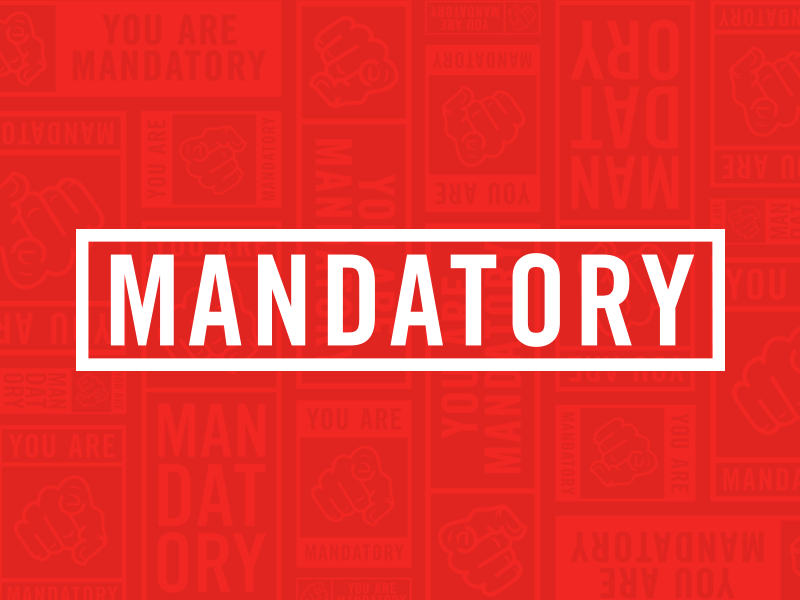Images courtesy of the writer and MoCA.
Miranda July took to the stage at the West Hollywood Council Chambers the other weekend with an air of curiosity, lucidness and vulnerability. For her lecture “Artists on Artists: Miranda July on Catherine Opie,” she spoke about artist Catherine Opie’s latest show 700 Nimes Road, which is a collection of photographs of Elizabeth Taylor’s stuff and home that’s on view at the MOCA Pacific Design Center through May 8.
What began with a look at Opie’s new body of work led into July’s philosophy’s on our human desire to want “stuff” (materialism, in a sense), a brief history on Elizabeth Taylor, July’s artwork that deals some of these questions, and then July’s own relationship with Catherine Opie. Her talk was so intimate that at times it just felt like the whole audience was Miranda’s friend, there to catch up and hear her thoughts on things, and do a few moments of meditation for things that we felt sad about, as we do.
Also: In Review | Cat Art Show 2: The Sequel
MOCA Curatorial Fellow Anna Katz gave the opening introduction added another layer to this by contextualizing July’s talk as a performance in and of itself, in relation to Opie and Taylor. “A person like Elizabeth Taylor exists and circulates like an image in our minds,” she said. “Opie’s strategy was not to have Taylor sit for a portrait; in fact, the two women never met. Opie takes photos of her home and personal moments at 700 Nimes Road in Bel-Air, and during that we see Opie’s camera in some of the reflections — a trail of breadcrumbs. It is a double portrait of Catherine Opie and Elizabeth Taylor alike, and I think today we’re getting a triplicate through the lens of Miranda July.”

Installation view of ‘700 Nimes Road’
This triangulating theme is something that has popped up in a few of July’s recent projects, including the Somebody app which people would use to deliver other peoples’ messages as if they were stand-ins or surrogates. This sense of multiple mirroring at once felt like a reference to the funhouse mirror shoot-out scene in Orson Welles’ The Lady from Shanghai, the nature of selfie culture mirroring (“I want you to look at me looking at me and tell me how you see me”), and a three-way reflecting process. In this sense, July’s talk could have been framed as something like: “Miranda July on Catherine Opie on Elizabeth Taylor.”
What made it a full circle, however, was that rather than continue on with the mirroring, July closed the loop by bringing the lecture back to Taylor’s legacy, and then ending with her relationship to Catherine Opie, thereby sealing the discussion. Otherwise, this reflecting process could have gone on ad infinitum, making this into a potentially dangerous, never-ending loop. In July’s synthesis style, she started with the simple practice of recounting the thoughts she had while looking at this body of work.
“We’re thinking about Catherine Opie’s photos of Elizabeth Taylor’s stuff,” says July. “I’m literally going to say all the thoughts I had when thinking about her work.”

Portrait of Miranda July via Geffen MoCA
This initial statement literally sent audiences into Miranda July’s mind, from thinking about what it would be like to recreate these images of Taylor’s stuff simply by getting these items from thrift stores and arranging them. Then she imagined herself as people in the gallery looking at Opie’s Taylor images, and thought about what they were thinking, and then for a moment July confessed that she had this sort of proud feeling because in some way she felt like she had already made those images — but then she snapped out of that. It was a nice sensation though, to have that sense of accomplishment just from imagining having made this stuff.
Which is where she went next: the stuff. She grew up in a household where, she explains, “wanting stuff, like dolls and dresses and toys, was considered sort of dumb.” She went on to explain her long history of loving and wanting stuff.
I was struck by how she said “sort of dumb” rather than straight up “dumb,” because while materialism does seem dumb and for vapid people, we’re all sort of dumb in that way. Who doesn’t love to go around and call something dumb when they actually mean they love it. Like, ‘that dress is so dumb,’ or ‘that special drink I always order is so dumb,’ but that’s what makes it meaningful in a way —the dumbness of it, the knowing that to love a material object is in and of itself considered dumb though we’re all expected to do this, and we all do do this, and advertising tells us to. Certainly, consumerism is one of the things that differentiates us from pure animals.
This is not necessarily so in Japan, explains July, and then went on to talk about Shintoism, how sacred essences can exist in all things, so it’s easy for something like an object to become profound.
I looked this up and found an interesting point about Shintoism: “Shinto approves of the representation of God in the material.” This is contrary to idolatry, another version of why it is looked down upon to worship objects.
Back in the West, July explained, we have stories like the Velveteen Rabbit that make clear it’s dumb to love stuff because it’s not living. Like a cat is living, and a stuffed animal is not, and thus one of “the things that makes stuff dumb is that it’s not living,” she explains.
“If you don’t maintain a clean line between living and object, then you are either being childlike in a Velveteen Rabbit style,” she says. “The rabbit gets real. That’s a fuzzy line. If you love it enough it gets real — [then it’s] perverse like a fetishist.”
Yet despite our complicated relationship with stuff, it’s also what we have in common — and what has driven our environment to the brink of disaster. We all acknowledged this.
Then July made a pointed observation: What if we had realized that the idea of “us” was made up of the world around us, not just the stuff in our heads? If we had realized that everything was us, would we have treated the world differently?
“Let’s just take one quiet moment to just feel sad about all the fun we could have had if we had gone about this thing differently, believing that this was us instead of just this inside our heads,” said July, motioning with her hands about “us” as everything in front of us, the world around us, and not just what’s in our heads.
The moment of silent meditation ended when someone’s phone went off.

Stuff has appeared in July’s work. She became fascinated with stuff in her PennySaver project, which is documented in the book It Chooses You. She accidentally started this project in 2009 while she was in something of a rut, trying to finish the screenplay for her second film, The Future. It began when she started reading the PennySaver on her lunch breaks, a classifieds booklet that had ads with items for sale. More personal than eBay or Craigslist and more specific than the classifieds of a local newspaper, July decided to take a risk with it. She started calling up people who placed ads in the PennySaver, and then went to their homes to see who they were and learn their stories. She took photographer Brigitte Sire with her, and ended up creating It Chooses You, a book based off of the project. She wanted to meet these people from the PennySaver, and also interview them about their lives. She paid them for their time.
One of the people she met during the project was a man named Joe who had an odd collection of Friskies cat food labels organized onto a wall. She was curious about what they meant to Joe, about how his stuff in this instance was something like him, who he was, what did it all mean — but you can’t just come out and ask about that. You can ask about the stuff, though.
“I often do start with objects because the other concerns are so lofty — like if you come right in and say, ‘what is your secret sadness?’ — and it’s hard to just jump right into that,” said July. “But if you’re like, ‘can you explain the Friskies thing?’ And usually right next to it is the secret sadness.”
What this has to do with Elizabeth Taylor’s stuff, then, is that there are stories in objects that are personal, important and revealing. Interestingly, however, Opie makes only a portrait of this stuff, rather than a conversation with Taylor about specific objects. And the two never met. Opie was more concerned with the exercise of making portraits out of objects, or portraits for objects, and creating that as a portrait of Taylor. Or, as July put it so charmingly crudely and hilariously: “Dame Elizabeth Taylor looked at Catherine Opie’s body of work and was like, ‘OK, this pervert may photograph my stuff.’”

Photograph of Miranda July’s talk, by Alicia Eler.
The audience then learned more about who Taylor was, aside from just being the most photographed actress in the world — a true icon. She was also an early AIDS activist, and founder of AMFAR, long before it was cool or required of celebrities to have non-profit causes, charities, aspirations outside of their acting careers. Then July pooled the audience for knowledge about Taylor, which ended up including a few stories about how she one time married a regular guy who was a construction worker named Larry Fortensky — her seventh and final husband — and another about a woman who ran into her at a movie theater bathroom.
Also: Exhibit | Kenneth Paul Block: Illustrations
July’s point in discussing Taylor, who passed away in 2011, was to both give context to Opie’s photos, and to help everyone realize that Elizabeth Taylor was then what girls like Lena Dunham, Grimes, and Jennifer Lopez are to us today — modern-day icons of femininity.
“I’m thinking about people who are young and current now, and how they are going to one day seem like old-timey people who have nothing to do with young people of the future,” she said.
We also learned that Opie and Taylor had the same accountant — a small Hollywood overlap, a potential coincidence. After that, it was back to Opie — mostly, July’s tangential relationship with her, the photographer of Elizabeth Taylor’s stuff.
She went through and listed the four times that her and Catherine Opie have interacted, from July asking her to be a part of her project We Think Alone, where she asked people to share private emails on subjects such as money, what are you working on, or other personal things, to number two, the time July posed in a portrait for Opie. The third interaction happened when July took snapshots of the contents of Catherine Opie’s backpack. Then the fourth interaction happened quite close to the day of this talk; less than a week before, the two ran into each other at a dinner party and ended up chatting about electric cars. Opie had just purchased an electric car and July said she was looking into doing the same, so for about 15 minutes Opie told her about four different types of electric cars.

A photograph from Miranda July’s talk, by Alicia Eler.
Catherine Opie wasn’t able to make Miranda July’s talk because she was in Spain. It didn’t matter, though; they’d already had plenty of time to talk about stuff.









